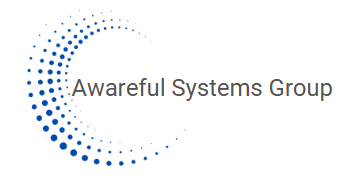Ecosystem-wide Patterns in Context

Complex systems always exist within a context, and that context both shapes, and is shaped by, a number of variables. The Complexity Space™ Framework (CSF) identifies six interdependent elements that contribute to the an Ecosystem and it’s unique Patterns in Context. Together the elements of the CSF provide language and distinctions for “pattern-centric” awareness of how an organization operates:
Ecosystem(s)– Operate as Complex Adaptive Systems Generating Patterns in Context.
- Dimensions -Ecosystem wide Patterns
- Linkages – Connecting Patterns
- States -Strategic “Meta” Patterns in Ecosystems
- Disruptions – Disturbing Patterns
- Catalysts – to Influence Pattern-Based Change
- Indicators – of Pattern Movement
![]()
Enduring, Deeply Embedded Patterns
The Foundation of an Ecosystem is predicated on the ecosystem-wide patterns that persist during constant change.
History: The ecosystem’s traditions and significant historical milestones
Context: The surroundings in which the ecosystem operates
Culture: Who and what the ecosystem is at its core
Motivation: What was the “attractor” that formed the ecosystem? What is the “glue” that holds it together?
![]()
Disruptions as an Advantage
Proactively Disturbing Patterns can accelerate change and transformation initiatives.
States can — and do — change. Those changes can be internally or externally generated and shift patterns across all elements of the Ecosystem to varying degrees. Those changes typically occur because of awareness that the current State does not serve the system today, or will not serve the team or organization in the future.
In the context of the three States (Status Quo, Innovation, Mutation) we have named these triggers “Disruptions.”
![]()
Patterns that Connect
Linkages serve as the critical connections within and between Ecosystems and their Eco-subsystems.
Linkages enable shared conversation, assessment, prioritization, and potential ways to influence structural patterns in the Ecosystem.
![]()
Catalysts are Tactical
In the Complexity Space™ Framework, Catalysts serve as tactical approaches to more readily shift behaviors and actions that influence pattern-based change. Each of the seven catalysts have recognizable functions and roles in organizational activities.
Connections ~ Leadership ~ Stories ~ Risk Taking ~ Organizational Structures ~ Systems ~ Processes
![]()
Meta-Patterns = Large Scale Change
We have identified three “meta-patterns” of operational, product or strategic patterns:
The “Status Quo” state is a system’s “business as usual” space. The goal: consistency.
In the “Innovation” state, the organization seeks to “do what it already does better. The goal: evolutionary change.
The “Mutation” state is where little agreement and certainty exists about what or how things are happening. We like to explain this state as one of “mutational opportunity.” The goal: revolutionary change.
![]()
Indicators Calibrate Next Steps
Indicators prompt one of the key questions in complex change and transformation, “Are we accomplishing what we wanted to?” by paying attention to the pattern movements that are the result of intentional actions. Indicators help us focus on the unique “pattern shifting” characteristics of Catalyst-driven changes and actions, while offering ongoing evaluation and assessment opportunities.
Navigating Change
The Complexity Space™ Framework Navigation Process focuses on the process for influencing patterns — patterns of development; patterns of experimentation; patterns of learning — the patterns of change.
Different phases of the Navigation Process are highlighted by questions — recognizing the emerging nature of the process that drives assessment, prioritization, action and learning.

